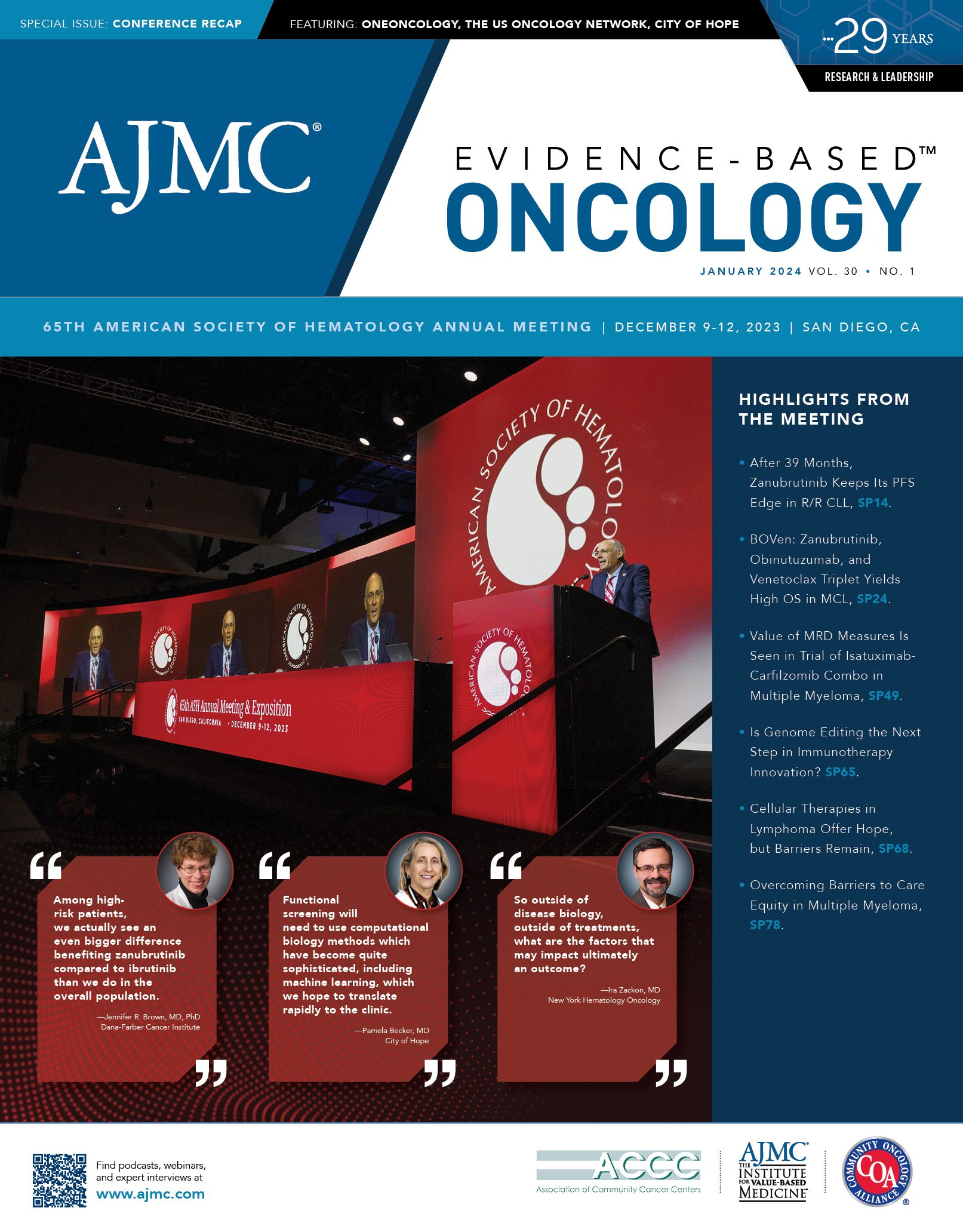- Center on Health Equity & Access
- Clinical
- Health Care Cost
- Health Care Delivery
- Insurance
- Policy
- Technology
- Value-Based Care
Patients With Multiple Myeloma Lack Awareness of CAR T-Cell Therapy, Research Says
The results indicated that a substantial proportion of patients, particularly in rural, less educated, and elderly demographics, are insufficiently informed about novel MM treatments, including chimeric antigen receptor (CAR) T-cell therapies and bispecific antibody alternatives.
A recent study featured at the 65th American Society of Hematology Annual Meeting and Exposition demonstrated critical gaps in patient awareness and understanding of cell therapies for multiple myeloma (MM).
With a median age of 68 years and a predominantly non-Hispanic White cohort, the results indicated that a substantial proportion of patients, particularly in rural, less educated, and elderly demographics, are insufficiently informed about novel MM treatments, including chimeric antigen receptor (CAR) T-cell therapy options such as idecabtagene vicleucel (ide-cel), ciltacabtagene autoleucel (cilta-cel), as well as bispecific antibody (bsAb) alternatives such as teclistamab.
Image Credit: Maverick - stock.adobe.com.

As only 6.5% and 2.6% of participants have experienced CAR T and bsAb treatments, respectively, and 27.9% and 70.5% have never heard of these therapies, researchers stated the findings underscored the urgent need for targeted awareness campaigns to bridge knowledge gaps and empower all patients to make informed decisions about their MM treatment journey.
The study employed an anonymous 25-question online survey, distributed to patients with MM within the Mayo Clinic database and members of the International Myeloma Foundation's MM support groups. The survey, active from March 30 to July 12, 2023, covered basic demographics, understanding of available T-cell directed MM treatments (CAR T, bsAB), and treatment preferences. Descriptive statistics were calculated using R language, and multivariate analysis was performed using logistic regression.
The survey included 2370 respondents with a median age of 68 years (range, 30-95), and a median age at MM diagnosis of 62 years (range, 18-88). A significant portion of respondents (59.5%) had been diagnosed with MM within the previous 5 years. The majority (89.4%) identified as non-Hispanic White, reflecting the predominantly homogeneous racial composition of the cohort.
Educational attainment varied among participants, with categories including high school (10.9%), some college but no degree (18.1%), associate/bachelor (39.7%), and master’s/professional (32.3%). Geographical distribution and residence types were diverse, spanning the West (24%), Midwest (46.2%), Northeast (3.3%), South (24.8%), and 1.7% outside the United States, with rural (26.7%), urban (21.4%), and suburban (51.9%) designations.
The goals of MM treatment, as reported by participants, prioritized complete remission (66.1%), longer survival (55.3%), and low symptom burden (43.3%). Despite the recent introduction of novel therapies, only 6.5% and 2.6% of respondents had undergone CAR T-therapy and bsAb treatments, respectively. A substantial percentage had never heard of CAR T (27.9%) or bsAb (70.5%), indicating a critical gap in awareness. A considerable proportion lacked understanding of the risks and benefits associated with CAR T (65.5%) or bsAb (90.7%).
Among those expressing a preference for CAR T products, 5.4% favored cilta-cel and 1.9% ide-cel, while 92.7% were uncertain or had no preference. Within the subgroup that comprehended the risks/benefits of CAR-T, 73% expressed a preference for cilta-cel, researchers noted. Despite the availability of 2 CAR T products, 87.5% of respondents were unsure of any differences between them, while a minority noted distinctions in targets (6.3%), response rate (5.9%), response duration (6.2%), side effects (4.9%), and manufacturing time (2.7%). The primary concern for both CAR T and bsAbs reported by 89.4% was side effects.
Participants primarily relied on their health care teams (82.6%), online resources (43.6%), and other patients/support groups (37.9%) for information on MM treatment. Demographic characteristics significantly influencing awareness and understanding included higher education, residency in the northeast US, urban or suburban living, and more than 5 years since MM diagnosis.
Conversely, respondents over 70 years of age were less likely to be aware of or understand the risks and benefits of these novel MM treatments. Race and ethnicity did not show statistically significant associations in this predominantly non-Hispanic White cohort. These findings underscore the need for targeted awareness campaigns to address knowledge gaps and ensure equitable access to emerging MM treatments across diverse sociodemographic groups.
Reference
Adu Y, Das S, Ailawadhi D, et al. Patient awareness of CAR-T and bispecific antibody treatments for multiple myeloma: Real-world learnings and disparities. Paper presented at the American Society of Hematology Annual Meeting and Exposition; December 9, 2023; San Diego, CA. Session 2418. https://ash.confex.com/ash/2023/webprogram/Paper189642.html

